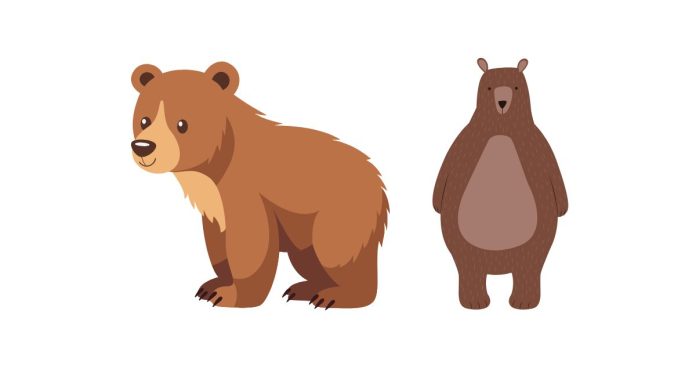Grizzly bears are among the most well-known and awe-inspiring creatures in the animal kingdom, often symbolizing strength, resilience, and the wildness of nature. If you’re curious about where these majestic bears call home, you might wonder: Where do grizzly bears live? In this post, we’ll explore the various habitats of the grizzly bear, shedding light on where they thrive and the unique environments they inhabit.
The Range of Grizzly Bears
Grizzly bears, also known as brown bears, are found primarily in North America, with their range stretching across both Canada and parts of the United States. These bears are known for their impressive size, powerful build, and adaptability to a variety of ecosystems. Let’s break down the key locations where grizzly bears make their home.
- Northwestern Canada
- Habitat: Grizzly bears have a significant population in the vast wilderness of British Columbia, Alberta, and the Yukon. These regions are characterized by dense forests, mountainous areas, and cold, rugged terrain, which provide the bears with plenty of space to roam, forage, and hibernate.
- Climate: The cooler, temperate climate of these northern regions suits the grizzly bear’s need for cold winters for hibernation, and the abundance of food sources ensures that the bears thrive in this environment.
- Alaska
- Habitat: Alaska is one of the largest habitats for grizzly bears in North America. The state’s forests, mountains, and coastal regions provide an ideal setting for the bears. With plenty of wild game, fish (like salmon), and berries to feast on, grizzly bears in Alaska have a rich, varied diet.
- Climate: Alaska’s cold, northern climate is perfect for grizzlies during their hibernation period, which typically occurs in the winter months.
- The Rocky Mountains
- Habitat: In the United States, grizzly bears are most commonly found in the Rocky Mountains, particularly in Montana, Wyoming, and parts of Idaho. National parks like Yellowstone National Park and Grand Teton National Park are known for their grizzly bear populations.
- Geography: These areas feature dense forests, meadows, and high mountain ranges that offer a range of food sources, from plants to large mammals like elk and deer. The vast wilderness areas in this region provide grizzly bears with both seclusion and the space they need to thrive.
- The Northern Cascades
- Habitat: The Cascades, which stretch through parts of Washington State, also house grizzly bears, although their numbers here are relatively small due to habitat loss and human encroachment.
- Climate: The temperate climate in the Cascades provides the bears with diverse food sources, including salmon from rivers and streams, and a mix of forested areas and alpine meadows.
- The Great Bear Rainforest
- Habitat: Located on the central coast of British Columbia, this vast and remote rainforest is one of the most ecologically rich areas in the world, supporting a variety of wildlife, including grizzly bears.
- Ecology: The Great Bear Rainforest offers a combination of dense forest, wetlands, and coastline, along with an abundance of salmon, which is a key part of the grizzly bear diet.
Grizzly Bear Habitats: Features and Conditions
Grizzly bears are highly adaptable and can live in a wide range of habitats, but they tend to prefer environments where they can find a good mix of food and shelter. The key features of a grizzly bear’s habitat include:
- Forests: Grizzlies thrive in forested areas, where they can find shelter and ample food.
- Mountains and Hills: Grizzly bears are excellent climbers and can navigate rocky terrains in search of food.
- Coastal Regions: Coastal areas with abundant fish, especially salmon, are prime habitats for grizzly bears.
- Rivers and Lakes: Grizzly bears are excellent swimmers and are often found near freshwater sources, which provide both food and water.
Why Are Grizzly Bears Found in These Areas?
The areas where grizzly bears live offer plenty of resources and ideal conditions for survival. Grizzly bears are omnivores, meaning they eat a variety of foods, including plants, berries, fish, and small to large mammals. These regions offer abundant food, space, and opportunities for the bears to build dens and hibernate during the colder months.
- Hibernation: Grizzly bears need cold climates to hibernate during the winter, typically in areas where the temperatures drop significantly. These hibernation spots are usually found in forests or mountainous areas, where the bears can stay warm and secure during the winter months.
Grizzly Bears and Conservation
Grizzly bear populations are under threat due to habitat loss, human encroachment, and poaching. Conservation efforts are ongoing to protect their habitats and ensure that these majestic creatures continue to have a place in the wild.
Efforts include habitat restoration, reducing human-wildlife conflicts, and educating the public on how to coexist peacefully with grizzly bears.
Grizzly bears are found in a variety of habitats across North America, with significant populations in Canada, Alaska, and parts of the United States. These habitats include forests, mountains, coastal regions, and wilderness areas, all of which offer the bears the food, space, and shelter they need to survive. As apex predators and essential parts of their ecosystems, grizzly bears play an important role in maintaining the balance of the environments they inhabit.
What do you think about the habitats of grizzly bears? Have you had any close encounters with these magnificent creatures in the wild? Feel free to share your thoughts or experiences in the comments below!


